10 Best PHP Books – From PHP Zero to PHP Hero (Spring 2023)
We’ve researched and reviewed the best PHP books, ranking them based on their pros, cons and features.
Did you know that PHP was originally invented not as a programming language, but as a simple set of tools to help maintain Personal Home Page documents? Now it is used by some of the biggest companies like Facebook and WordPress. If you want to learn PHP, you need to get your hands on some good books.
We reviewed 35 products to select 10 best PHP books with PHP & MySQL being our Editor’s Choice. We included books for different levels of expertise so whether you are just starting out or you are a seasoned professional, these books will help you brush up on your PHP skills. We also looked for books that are updated for the latest versions of PHP. Finally, many of these manuals are available in both electronic and print versions for your convenience.
| Name | Nomination | Overall rating |
|
1. PHP & MySQL This book is a complete guide to PHP language, providing you with all the skills and knowledge you need to build powerful web applications |
Editor’s Choice | 9.9 |
|
This manual covers PHP 5 and PHP 7 and is also perfect for beginners due to its simple language and lots of tasks |
Best for Beginners | 9.8 |
|
3. PHP: Learn PHP in One Day and Learn It Well With this affordable book, you will quickly master PHP and be able to put your knowledge to practice by creating your own project at the end of it |
Best Value | 9.7 |
|
In addition to all necessary PHP basics, this book helps to master MySQL |
Best Combination of PHP and MySQL | 9.6 |
|
This manual takes a concise approach that covers all of the essentials: from variables and expressions to arrays, objects, functions, and error handling |
Best for Advanced Level | 9.5 |
|
6. Learning PHP, MySQL & JavaScript With over 800 pages of content, you’ll learn everything from database structure to complex queries, and from creating dynamic web pages to styling them with CSS |
Most Comprehensive |
9.4 |
|
7. PHP 8 Programming Tips, Tricks and Best Practices With this book, you can get up to speed with the latest changes in PHP 8 and take advantage of best practices enforced by PHP 8 |
Best PHP 8 Book | 9.3 |
|
8. Learning PHP The effective exercises at the end of each chapter will help you to put new knowledge into practice and perfect your PHP skills |
Best Practice | 9.2 |
|
This book will help you to understand all the new features that have been introduced in PHP 7 and implement them in your projects |
Best PHP 7 Book | 9.1 |
|
This book is a well-organized, easy-to-read guide for those who already have some experience in web development and want to take it to the next level |
Best for Intermediate Level | 9.0 |
Top 10 PHP Books Review 2022
Features:
- Author: Jon Duckett
- Publisher: Wiley
- Edition: 1st
- Number of pages: 672
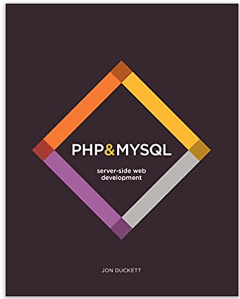
PHP & MySQL is our Editor’s Choice because it is a complete introduction to the world of PHP and MySQL written in simple language, making it perfect for beginners. With clear instructions, lots of practical examples, and step-by-step explanations, it’s easy to get started writing your own code. You’ll learn how to store data in MySQL database, create pages that are tailored to each visitor, and build a CMS or social network. There are also plenty of practical code examples and online exercises to help you practice what you’ve learned.
The PHP & My SQL book covers a wide range of topics and has a full-color design that makes it easy for you to learn how to build apps from scratch, even as a beginner. It’s similar to the PHP for the Web book, which is the second option on our list, but the PHP & My SQL book is better suited for those who barely know the programming language. Some helpful newbie features include infographics, inspiring code examples, photography, and more.
What we liked
- Full-color images, diagrams, and infographics;
- Step-by-step instructions, clear and simple explanations;
- Expert tips;
- Good for beginners;
- Many practical code examples;
- Full sample website;
- Online exercises.
What could be better
- The book doesn’t contain exercises but offers them online.
Features:
- Author: Larry Ullman
- Publisher: Peachpit Press
- Edition: 5th
- Number of pages: 496
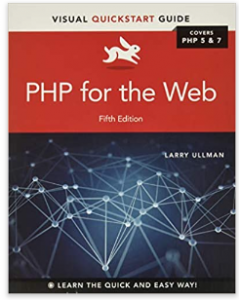
If you’re looking for a beginner-friendly guide to learning PHP, look no further than this PHP for the Web from Larry Ullman who is a well-known web and software developer. With clear instructions and detailed explanations, this book covers both PHP 5 and PHP 7 and provides you with all the information you need to start coding with this popular language. Plus, with real-world examples and tasks throughout, you’ll be able to put your new skills into practice immediately.
Those just starting with PHP 5 and 7 can try PHP for the Web book. The book is a task-based visual reference guide that comes with a lot of screenshots and concise steps. The PHP for the Web is suitable for beginners, like the PHP & My SQL book named our Editor’s Choice. But, the former is better suited for those who want to specifically learn PHP 5 and PHP 7 rather than the entire programming language. It comes with a reference guide for easy learning.
What we liked:
- Covers PHP 5 and PHP 7;
- Beginner-friendly;
- Task-based;
- Visual approach;
- Detailed instructions and explanations;
- Real-world examples.
What could be better:
- Some buyers note it is too basic and simple for advanced users.
Features:
- Author: Jamie Chan
- Publisher: Independently published
- Edition: not specified
- Number of pages: 246
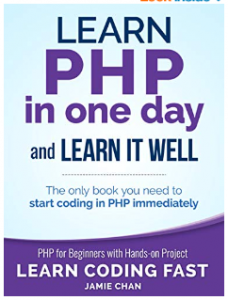
This affordable book is an excellent way to dive into the world of PHP. It teaches you how to set up your computer and web hosting account, and how to use text editors and FTP clients. The author then takes you through the basics of HTML before explaining PHP in detail. You will learn about variables, strings, arrays, functions, objects, loops, and much more. By the end of this book, you will be able to create a mini-blog using PHP & MySQL to check yourself and apply your skills in practice!
Learn PHP in One Day and Learn It Well excels in the form of affordability and is an excellent alternative to the PHP & My SQL book that we stated as our Editor’s Choice. If you want to save money and can’t afford PHP & My SQL, you can buy this affordable book instead. It comes with beginner-friendly explanations and examples. Although it’s shorter than most books on this list, all the topics are carefully selected to give you extensive exposure to PHP. It stands out with the project offered at the end of the book that allows you to apply what you learned.
What we liked:
- Low price tag;
- Fast results in mastering PHP;
- Concise explanations;
- The project at the end of the book lets you apply your new skills in practice creating a mini-blog with PHP and MySQL;
- The topics include HTML form handling, object-oriented programming, security management, error and exception handling techniques, databases, and more;
- Detailed examples.
What could be better:
- The book requires basic knowledge of HTML and SQL;
- Small.
Features:
- Author: Mike McGrath
- Publisher: In Easy Steps Limited
- Edition: 2nd
- Number of pages: 192
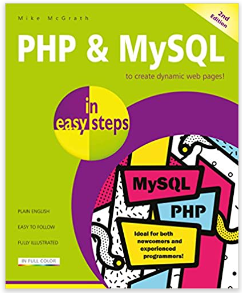
This book is the perfect guide for anyone who wants to create their own data-driven server-side web pages. It explains how to install a free web server, the PHP interpreter, and the MySQL database server so that you can create an environment in which you can produce your very own PHP-based web pages. You will learn how to write PHP scripts and make MySQL database queries, and you will find examples that illustrate how to store and retrieve Session Data, provide a Message Board, and create an E-Commerce Shopping Cart.
The PHP & MySQL In Easy Steps also comes at an affordable price, like the Learn PHP in One Day and Learn It Well in the third position on our list. But, the former separates itself by primarily teaching PHP and MySQL database queries, while the latter focuses on PHP alone. If you want to add PHP and MySQL to your skillset quickly, the PHP & MySQL In Easy Steps book is an ideal choice. It comes with specific examples and illustrations and is suited for developers, students, hobbyists, and programmers.
What we liked:
- Straightforward language;
- The book teaches not only how to write PHP scripts but also how to make MySQL database queries;
- A great number of examples;
- Covers MySQL 8.0;
- Very didactic.
What could be better:
- Small.
Features:
- Author: Kevin Tatroe, Peter Maclntyre
- Publisher: O’Reilly Media
- Edition: 4th
- Number of pages: 544
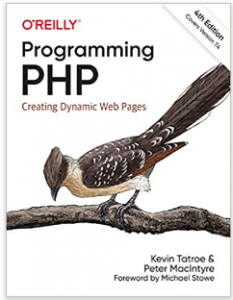
Programming PHP is a complete guide to PHP programming, from the basics of creating and using variables and expressions to advanced topics such as error handling, secure scripts, and performance tuning. Written by two leading PHP developers, this book begins with an introduction to the basics of PHP programming and progresses through every major aspect of the language. The book offers an in-depth discussion of the language’s features and functions, including how to use them for common tasks such as form processing, data validation, session tracking, cookies, file uploading, and downloading.
If you’re looking for a complete guide to PHP programming, the Programming PHP book is an ideal choice. The book best compares to the PHP for the Web book on our list, as they both provide concise steps and instructions for programming. But, Programming PHP is better suited for those with a robust background in using PHP and MySQL because it is written in a complex and advanced manner. It also focuses on PHP 7.4, which is more up-to-date than PHP 5 and 7, covered in the PHP for the Web book.
What we liked:
- Covers PHP 7.4;
- Examples and illustrations;
- You will learn how to work with relational databases like MySQL or NoSQL databases such as MongoDB;
- You will be able to generate dynamic images, create PDF files, and parse XML files.
What could be better:
- No page numbers;
- The book requires knowledge of HTML.
Features:
- Author: Robin Nixon
- Publisher: O’Reilly Media
- Edition: 6th
- Number of pages: 823
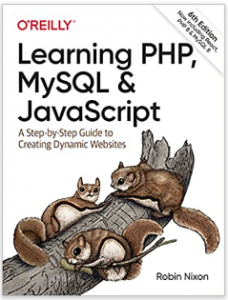
Learning PHP, MySQL & JavaScript is the perfect book for anyone looking to get started with web development. With comprehensive coverage of three essential technologies, this book will have you creating dynamic websites in no time. You’ll explore MySQL from database structure to complex queries, use the improved MySQL interface in PHP, and create pages that tailor themselves to the user. You’ll also learn how to manage cookies and sessions, maintain a high level of security, and enhance JavaScript with the React library.
If you don’t mind reading a longer book to learn about PHP and other languages, the Learning PHP, MySQL & JavaScript book is an ideal choice. It is similar to the PHP & MySQL in Easy Steps book on our list as they teach PHP and MySQL. But, the PHP & MySQL in Easy Steps is better suited for those who want a quick read, while the Learning PHP, MySQL & JavaScript book is ideal for readers who want an in-depth explanation. It also goes the extra mile to teach the most recent versions of JavaScript, CSS, HTML5, jQuery, and the React library.
What we liked:
- You will learn to work with the core technologies such as PHP, MySQL, JavaScript, CSS, HTML5, jQuery, and the powerful React library;
- Up-to-date.
What could be better:
- Some buyers have complaints about the smeared text;
- It is difficult for absolute beginners.
Features:
- Author: Doug Bierer
- Publisher: Packt Publishing
- Edition: not specified
- Number of pages: 528
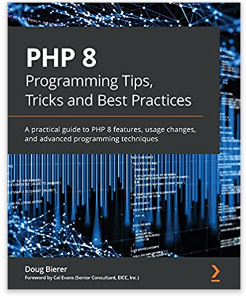
PHP 8 Programming Tips, Tricks and Best Practices is a comprehensive guide to the new object-oriented features of PHP 8. With this book, you’ll learn how to use scalar-type hints and return types in your code. You’ll also discover new enhancements for procedural programming including generators, closures, and anonymous functions. In addition, you’ll find out what changes have been made to error handling in PHP 8 as well as which extensions may be affected by these changes.
If you want to learn about PHP 8, you should go for the PHP 8 Programming Tips, Tricks, and Best Practices book. It can be seen as an upgrade of the Programming PHP book, fifth on this list, which only teaches PHP 7.4. If you already have experience in PHP 5 and above, this book is an ideal choice as it contains information on all the features that have been removed or deprecated in PHP 8 from previous versions. It also explains the best programming practices for PHP 8.
What we liked:
- Effective expert techniques that help to understand PHP 8 quickly;
- Presentation of all new features and updates in PHP 8;
- Learning what to watch out for when transferring older PHP applications to PHP 8;
- Concise explanations;
- Excellent structure of the book;
- Comparison between PHP 7 and PHP 8.
What could be better:
- Not for complete beginners.
Features:
- Author: David Sklar
- Publisher: O’Reilly Media
- Edition: 1st
- Number of pages: 416
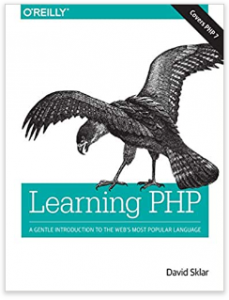
If you’re looking for a complete guide to learning PHP, look no further than this book from David Sklar. With engaging exercises at the end of each chapter, you’ll learn how PHP interacts with browsers and servers, understand data types and variables, and explore how to use arrays, functions, and objects. Once you’ve got the basics down, you’ll move on to more advanced topics like working with databases and session management, accessing APIs to interact with web services and other websites, and jumpstarting your project with popular PHP web application frameworks.
Those who learn better with hands-on practice and engaging assignments can use the Learning PHP book. Unlike the Learn PHP in One Day and Learn It Well on the third position on our list, which adds a project to the end of the entire book, Learning PHP comes with end-of-chapter exercises and projects that make it easier to understand what you have learned. It also teaches PHP 5 and PHP 7. It is ideal for hobbyists and experienced programmers who want to put their learning into practice and jumpstart their projects on this framework.
What we liked:
- Covers PHP 7;
- Engaging exercises at the end of each chapter to put new knowledge into practice;
- Modern PHP;
- Clear explanations and examples.
What could be better:
- Some chapters contain general information that won’t be useful for advanced programmers.
Features:
- Author: Branko Ajzele
- Publisher: Packt Publishing
- Edition: not specified
- Number of pages: 536
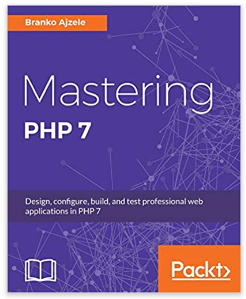
The book is a perfect guide for those who want to learn PHP 7 and start using it in their projects. It will help you to get familiar with the current state of the language, its standards, and how they are implemented in practice. You will take your first steps in developing services through SOAP and REST protocols, which are widely used by modern web applications. You will also explore the Apache Thrift protocol that helps you connect different programming languages into one project. Moreover, you will see how serverless architecture may be implemented on the AWS platform and what benefits it brings to developers.
Mastering PHP 7 is the ideal book for those who want to learn about PHP 7 strictly. It’s more focused on PHP 7 than the PHP for the Web book on our list, which explores PHP 5 and PHP 7. If you already know PHP 5 and above, you should consider the Mastering PHP 7 book instead. It provides you with all the newest tools on PHP 7 and is characterized by a gradual approach how to build scalable apps, from building and testing to tracing and deploying.
What we liked:
- The description and explanation of new PHP 7 features;
- Unveiling effective PHP OOP concepts for you to write effective PHP code;
- Learning the details of PHP performance optimization;
- Covering serverless architecture and the reactive programming paradigm;
- Broad coverage of topics.
What could be better:
- Not for beginners.
Features:
- Author: Joel Murach
- Publisher: Mike Murach & Associates
- Edition: 4th
- Number of pages: 848
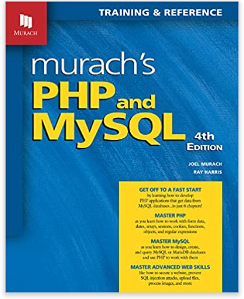
Murach’s PHP and MySQL is one of the best books to learn how to build a website using PHP and MySQL. The book covers all the fundamentals of these technologies, including installation, creating a database, writing code in HTML and PHP, connecting with a database using SQL statements, creating forms for user input, displaying data on web pages with HTML tables and forms, adding images to web pages with CSS stylesheets. With this single resource, you’ll have everything you need to develop high-quality database-driven websites with PHP.
If the PHP for the Web, the best beginner option on our list, is too elementary for you and the Programming PHP, which we recommended for advanced developers, is too complex, we included an intermediary option. Murach’s PHP and MySQL book is ideal for those who already have some experience in web development but want to move to an advanced level. Intermediate web developers can learn how to build web apps and use the learned skills professionally.
What we liked:
- Excellent organization of the book;
- Simple and clear explanations;
- Comprehensive coverage of all necessary technics, practices, and technologies.
What could be better:
- Pricey.
Things to Consider
If you are new to programming in general, we recommend starting with a book that will also teach you the basics of programming before diving into PHP. For more experienced programmers, we recommend books that focus specifically on PHP. And for those who are already familiar with PHP, advanced books that cover topics like object-oriented programming and security are perfect.
What Is PHP?
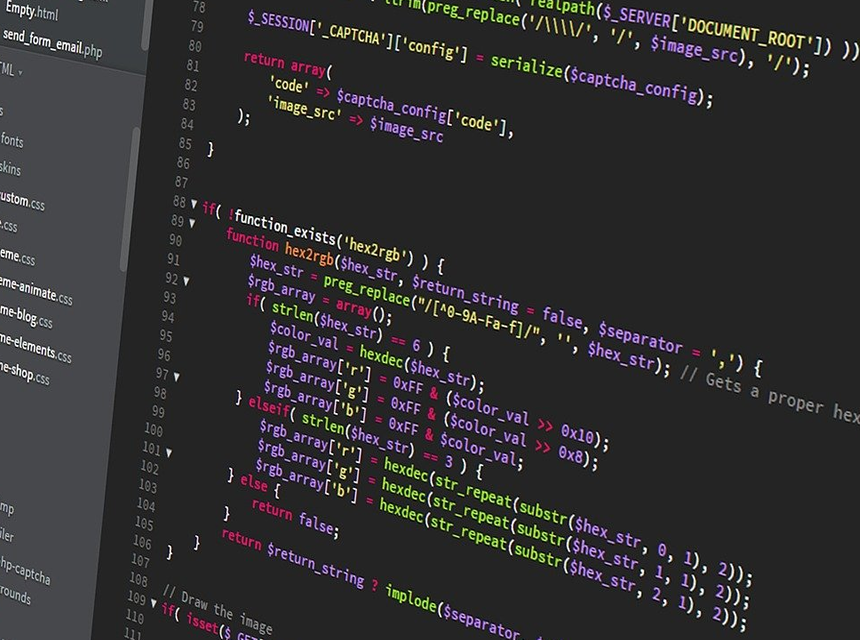
PHP is a scripting language that is used to create dynamic web pages. It can be embedded into HTML code, and it can also be used to create stand-alone programs. PHP is free to download and use, and it runs on most operating systems, including Windows, macOS, Linux, and Unix.
Why Learn PHP
If you want to create dynamic websites, then learning PHP is a good choice.
PHP is a popular language for web development because it is relatively easy to learn compared to other languages like Java and Python and it is extremely versatile.
PHP can be used to create simple websites or complex web applications. It is also one of the most widely used languages for creating content management systems (CMS) like WordPress and Drupal. This is the reason why so many hosting providers offer PHP-based hosting plans.
FAQ
Can I use PHP for commercial purposes?
Yes, you can. PHP is released under the PHP License, which is a free software license. This means that you can use PHP for both personal and commercial projects without any restrictions.
Do I need to install anything to use PHP?
No, you don’t need to install anything to use PHP. However, if you want to run PHP programs on your computer, you will need to install a web server like Apache and the PHP interpreter.
What are some of the most popular PHP-based websites?
Some of the most popular websites that use PHP include Facebook, WordPress, Wikipedia, Tumblr, and Yahoo!
Our Verdict
Our Editor’s Choice, the PHP and MySQL from Jon Duckett, is your one-stop resource for everything PHP. With full-color images, diagrams, and infographics, this step-by-step guide makes learning easy. You’ll start by getting to grips with the basics of PHP, and then move on to creating dynamic websites with MySQL data.
Our second best PHP book is the PHP for the Web. The manual covers everything you need to know about PHP. It will help you write your first program and then move on to more advanced topics
The PHP: Learn PHP in One Day and Learn It Well is an affordable and effective solution to mastering the PHP programming language quickly. Concise explanations and examples make it easy to understand, and the project at the end of the book lets you apply your new skills in practice.
